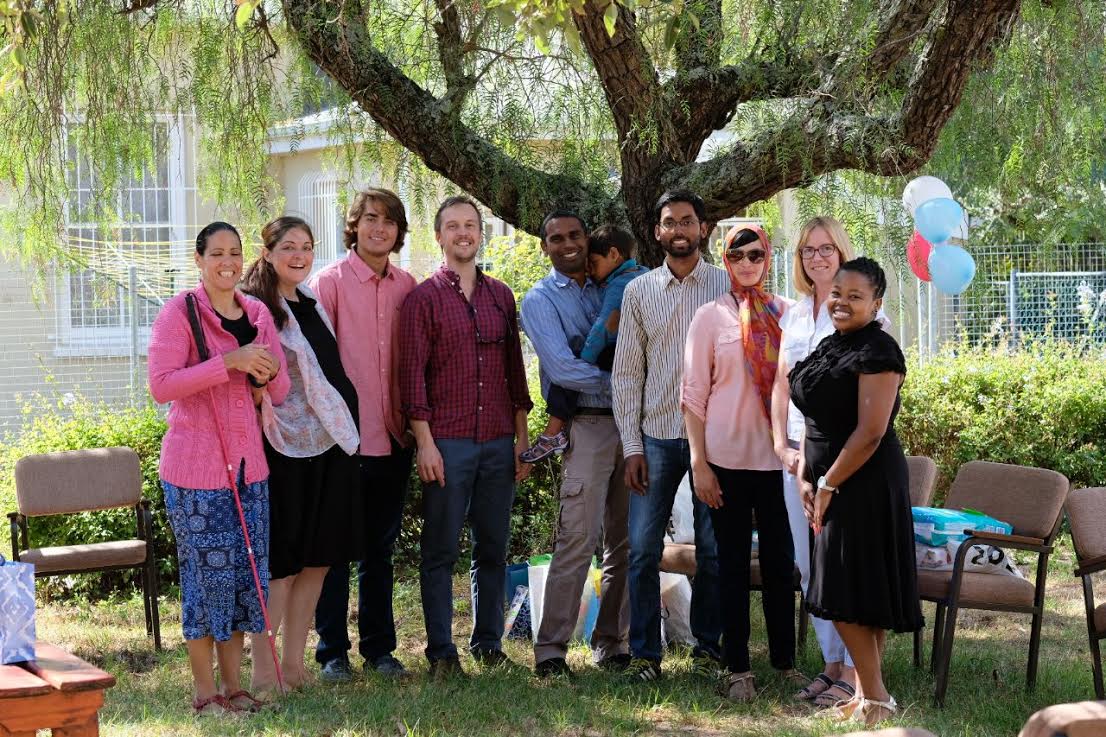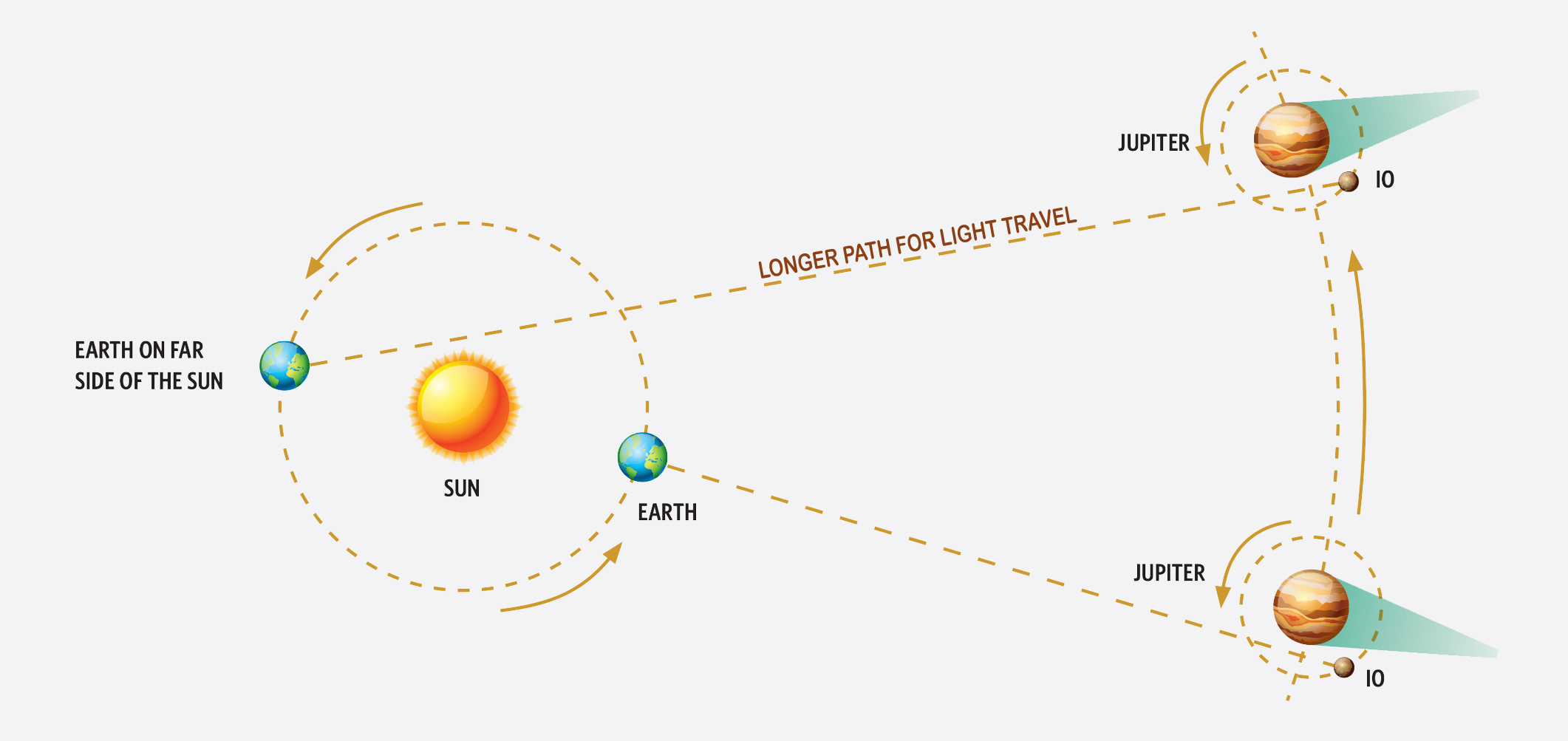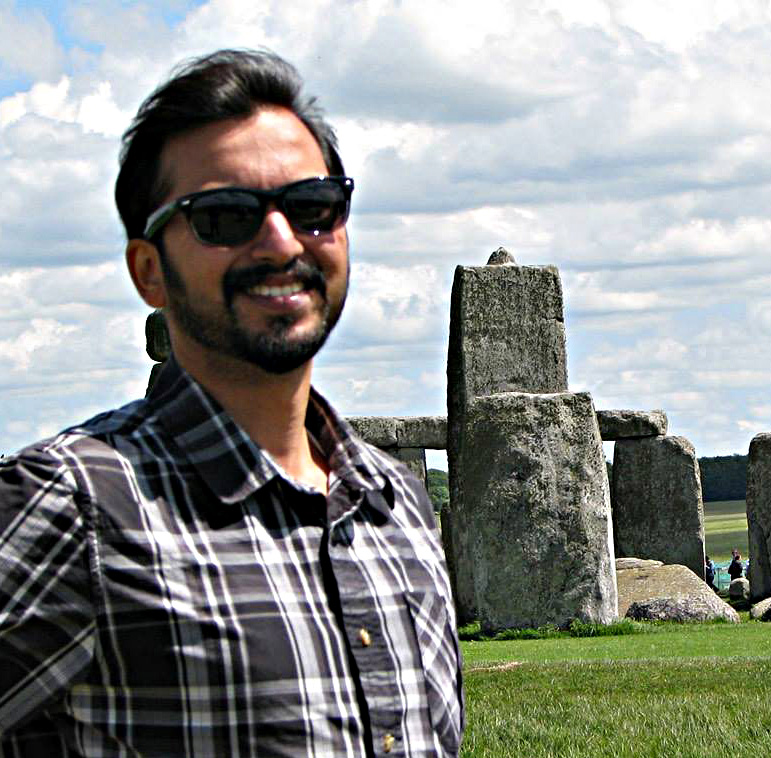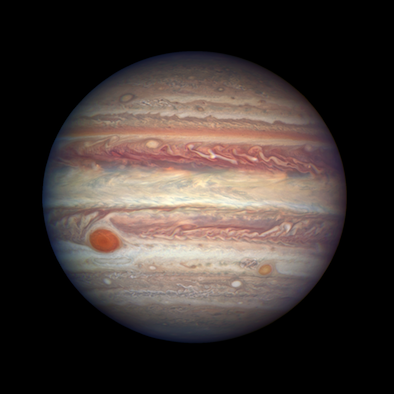Final Thoughts, Final Borders!
- Details
- Category: GAM 2017 Blog
By Johannes Stübler
We all are sitting in the same spaceship called Earth. Fragile and vulnerable, covered by a thin atmosphere which protects us from space.
If mankind will survive we have to burst all limits and have to leave sometimes our spaceship Earth and we have to learn to deal with the conditions of deep space. Personally I belive that life is an universal phenomenon. The myriad of suns, stars and, as we know today, planets don't make me belive we are the one and only in our universe. Even we are really unique in our universe the more we have the damned obligation to put ourself out for keeping this life going on. All our strength, our knowledge and creativity should be focused on this goal. We all know that life on Earth has an expiration date bound to the life circle of our sun. Long before the hydrogen reserves are over mankind must have done the transfer to space and has to overcome the last frontiers. Beside this last final border we have limited resources and we have to open up new resources which are surley outside of our planet. We must explore our neighbourhood, our solarsystem and later the deep space beyond.
We can do this, but only together. Already today we should work on this from generation to generation we have to pool our forces to reach tis goal, instead of daily redrawing borders and to battle each other. “One People, One Sky“ can be a survival strategy for the future. So the idea of Astronomers Without Borders and “One People, One Sky“ is not only a slogan – it's much more a mission, it can be a kind of philosophy, and a timeless survival strategy for our mankind - worth to be lived – today and now. It pays to encourage and enspire young people every time and everywhere. They are the ones who hold our fortune and the future of our mankind in their hands. GAM is a good chance to do this! A good idea needs no missionary zeal but only people who will understand the mission "One People, One Sky“ and who are willing to break down borders in their daily life. The possible success can come by itself :-)
 Joe Stübler Living in Linz/AUSTRIA (called "Keplertown- Linz", because the famous astronomer Johannes Kepler was living and working in Linz during 1612-1626). Being an amateur astronomer for over 35 years, with extreme desire to network with amateur astronomers and even professionals all over the world, I am totally dedicated to the idea and mission of Astronomers Without Borders and trying to live this idea and mission in my daily astronomical life and work.
Joe Stübler Living in Linz/AUSTRIA (called "Keplertown- Linz", because the famous astronomer Johannes Kepler was living and working in Linz during 1612-1626). Being an amateur astronomer for over 35 years, with extreme desire to network with amateur astronomers and even professionals all over the world, I am totally dedicated to the idea and mission of Astronomers Without Borders and trying to live this idea and mission in my daily astronomical life and work.
Daily Menu
- Details
- Category: GAM 2017 Blog
By Grom D. Matthies
Around volcanic vents deep down on oceans floor, tiniest creatures thrive on what the inners of Earth provide. They feed, not unlike a washing machine, on energy and some chemicals that would cook or corrode any decent surface creature instantly. Those tiny fellows, however, tend not to age a lot as they are prey to some other, slightly bigger critters who love to chew on snacks with a strong taste of sulfur and whatnot. These critters are in turn the staple food for the digestive apparatus of even bigger ones. We humans call this sequence a food chain. This chain works quite well albeit existing in eternal darkness separated from all the rest of what we call life.
Permanent feeding frenzy
In less deeper waters and on dry land things are no different. We know that well. Eat or be eaten, an expression which never seems to loose validity. Weren’t it for our ingenious way of perpetuating and applying knowledge, humans barely would make a rank amongst the top ten predators of this food chain. Bowing to the circumstances of life, we tend to shrug shoulders – “that’s nature” – and keep on avoiding lions, sharks and tax officials etc. whilst holocausting on what the landscape provides in edible flora and fauna.
Upping the scale, even the inanimate, the lifeless, partakes in a weird kind of food chain on its own. Rocks, asteroids and comets, the most numerous objects in any stellar system are constantly gobbled up by bigger ones, like planets and moons.
Stars are no predatory exception. Though they do not need the nutritional input of their surroundings, their gravity has the same fatal outcome to any object suffering orbital motion disorder as do have the sharp claws and teeth of a cat on a distracted mouse venturing too close.
Stars are pretty much self-contained. They are born with all the food they need. However they do not necessarily escape occasional mishaps. More than half of all stars are part of binary or multiple star systems. As our telescopes confirm, quite often a bigger and much more massive star tends to cannibalize on its smaller less massive brethren. Sometimes it’s exactly the other way round –many novae and a certain type of supernovae are the visual outcome, as astronomers figured out.
Universal meal
The eat or be eaten campaign permeates all, from the tiniest existence to the biggest objects there are – galaxies. Proven, verified and filed away as fact, our galaxy already swallowed a bunch of smaller satellite galaxies. Most of those gigantic elliptical galaxies out there, as studies and simulations turn to point out, are the obese results of big spiral galaxies, like ours, eating another big galaxy.
This universe is apparently a feeding feast up to its most distant, though admittedly non-existing corners.
Laws of thermodynamics considered – all the energy that makes up our universe, plus all the energy digested, by division with c-squared, into matter had to come from somewhere. Meaning, most likely, some ‘otherverse’ (one or more of the possible multiverses, just not this one) is probably missing a huge chunk of energy or got swallowed whole to feed and fill the space that makes up our dimension. What we call the beginning of it all, the Big Bang, would have been a soundless Big Snack followed by a silent Big Burp (the expansion)– a snack on something that fed it all at once and for good.
Hands-on stars
All the above is obviously not a new cosmic theory. It is rather an odd thought experiment, an attempt to grasp a puzzle by taking an unexpected or unlikely approach. Einstein certainly did so. He overturned the one man point of view physics which fully explains (or rather not) the universe. Now we know it effectively takes two to tango – or in this case, two observation points and their motion relative to each other. That point of view issue is only a starter, culinary pun intended. All the mind bending space-time issues he and others figured out are part of the main course.
Since mankind discovered that our existence (all normal matter and energy) is just a 4% marginal minority inside a universe we can’t even see or feel, things got much more difficult. Depressing thought s apart (who likes to be a member of a tiny minority group), it is definitely relevant to solve the mystery of what the universe actually is and what it is made of or for.
Astronomers, astrophysicists, cosmologists and alike professions struggle. Maybe and hopefully the so much needed ideas must come from a totally different branch or knowledge. Probably there won’t ever be astro-gastronomers to study the cosmos as the above thought experiment would suggest. But as where are now the much sought astrogeologists, astrobiologist, astrochemists and so forth, to explain the workings in our and neighboring stellar systems, an equally different mindset is needed to make the next step in understanding the cosmos.
This more recent broadening of the interdisciplinary approach to science is, at least in education, by far more productive than the specialization in a single discipline. It is also more fun – the gastronomic approach in all its extent (not this downsized form here) certainly was.
So, all you amazing minds out there – give it a go and set your brains onto the stars. Leave the heavy math for later or others. What is needed is a new or at least different point of view. Whatever it will be, it sure will be a wondrous journey for the collective minds we are part of.
 Until recently Grom D. Matthies developed and test applied inquiry oriented science education resources and software for schools and public outreach. Currently he is looking for new, exciting feeding grounds.
Until recently Grom D. Matthies developed and test applied inquiry oriented science education resources and software for schools and public outreach. Currently he is looking for new, exciting feeding grounds.
Faces of Astronomy for Development
- Details
- Category: GAM 2017 Blog
By Karabo Makola and Ramasamy Venugopal
Astronomy is very special to all of us and the Global Astronomy Month (GAM) provides a great opportunity for everyone to celebrate our common love. Usually the OAD’s contribution to the GAM blog is written by Kevin Govender. This year, the blog is a retrospective from two visitors to the OAD. Both of us came from outside the astronomy community but have learned so much during our time at the OAD. Most importantly, we have realized the passion and thirst for action in this community and learned how people, given the opportunity, can have a tangible impact on the world.
 Faces of the OAD from left are Wanda Diaz-Merced, Eli Grant, Jack Harvey (former intern), Paul A. Wilson, Kevin Govender, Ramasamy Venugopal, Nuhaah Solomon,Vanessa McBride, and Karabo Makola.
Faces of the OAD from left are Wanda Diaz-Merced, Eli Grant, Jack Harvey (former intern), Paul A. Wilson, Kevin Govender, Ramasamy Venugopal, Nuhaah Solomon,Vanessa McBride, and Karabo Makola.
The OAD and the community it works with have a big task on their hands - to use astronomy to create a better world. Since the beginning, the need for a wide network and collaboration with institutions globally and across multiple fields was evident as was the requirement for a wide range of skills. The OAD has thus encouraged volunteers with varied skills to contribute to the IAU’s vision of development using astronomy. This has led to numerous visitors, either popping in to work at our Cape Town offices or collaborating with us remotely, joining the OAD staff for different periods of time.
The Office has in recent times seen unprecedented growth in the addition of new team members from a wide range of disciplines. In 2016 alone, there were/are 10 people that the Office hosted/is hosting in different capacities. These people were/are hosted as interns, volunteers, and postdoctoral researchers stemming from fields ranging from astrophysics to communications and everything in between.
Dr. Wanda Diaz-Merced is an astrophysicist from Puerto Rico who is developing tools and methods to teach science to people with different learning modalities. Wanda herself lost her sight as a student and performs her research by converting data into sound.
Dr. Paul A Wilson is a visiting astronomer from Norway who is passionate about data science and is creating a toolkit that will enable data science to be taught using astronomy. Data science is a critical component in social science and development fields and is a clear way for astronomy and astronomers to contribute.
Alex Gagliano and Jack Harvey were volunteers from the USA who helped the OAD in the critical and difficult task of consolidating and organizing data from all its funded activities. Their work is a critical part of our new call for proposals (to be announced soon).
Dr. Tara Batista, a visiting fellow from the USA, worked on evidence synthesis in education interventions along with OAD staffer Dr. Eli Grant
Jamie Ferguson is a PhD student from Scotland studying multimodal technologies that will allow astronomical data to be perceived through sound – with the goal of opening up astronomy to those with sensory disabilities. He visited the office as part of his research and collaboration with Dr. Diaz-Merced
Sahar Mohy-Ud-Din, a visiting fellow, is developing an ethics framework for the OAD as well as creating resources on project design and outcome measurements
Several PhD students from the University of Cape Town have also been active contributors over many years. Rajin Ramphul is our in-house programmer and has organized workshops to teach python programming. As a PhD student, Dr. Laure Catala led the AstroVarsity project, an effort to use astronomy to enhance teaching of physics and mathematics at university level.
This sample of people does not include our regular collaborators, both home and abroad, nor does it include our partners, regional offices, task forces, steering committee and many, many others who have made the office what it is today. However, this sample does illustrate a point: this is a highly interdisciplinary field requiring a wide skillset. The office also benefits immensely from the interactions with visitors of such diverse cultural, social and geographical backgrounds. A complete list of everyone who visited/interned at the OAD (with a short summary of their work) is available on our website.
Over the years, the OAD has come to act as a bridge between the astronomers and astronomy outreach community on the one hand, and social scientists and development experts on the other (and everyone else in between). Astronomy is a special field where non-astronomers play a significant role. There is a place for everyone, from graphic designers to programmers, web developers to educators, engineers to artists, film makers, physicists, scientists, etc. If you think you can contribute to the vision of ‘’Astronomy for a Better World’’, please contact us.
Ramasamy Venugopal
Ram is an engineer from India specializing in telecommunications. After completing his masters from the International Space University, he moved into the field of Astronomy and Space. Currently, he is a visiting fellow, managing projects at the OAD as well as a volunteer with World Space Week and Space Generation Advisory Council.
Karabo Makola
Karabo is a communications intern at the OAD. She graduated from the University of Limpopo with a BA Honours in Media Studies majoring in Journalism and Communication Studies. She joined the OAD in May 2016 to assist with publications and all communication activities within the office and with various stakeholders.
Can you find the speed of light yourself?
- Details
- Category: GAM 2017 Blog
By Samir Dhurde
 a representative image
a representative image
If you diligently do the previously mentioned study of the motions of the Galilean Moons, then you may want to continue a bit more on the lines of an important study that lead to one of the first, close-to-accurate measurements of the speed of light... and this is the best time to start trying the method yourself!
Extraordinarily Fast
Before the 17th century we believed that there was no such thing as the "speed of light". It was thought that light could travel any distance in no time at all. In 1638, the great Galileo Galilei was probably the first person to try to determine the speed of light. His experiments however were conducted over small distances on the Earth and the timing instruments available to him were not very precise. Hence, he could only confirm that the propagation of light is "if not instantaneous, then extraordinarily fast". Today we know that, given such short distances and the very great speed of light, it was quite remarkable that he at least tried.
Olé! Another Cheer for Astronomy
Back in the mid-1600s astronomers were measuring the orbital periods of Jupiter's four largest moons. They too were using the convenient period of the Opposition of Jupiter for these measurements. However, when they timed the same after the Opposition, they were in for a surprise. When fairly close to what is called the “Conjunction of Jupiter”, about six months after Opposition, astronomers found the predicted eclipses & transits to be consistently late by upto 22 minutes. Strangely these would get back on schedule at Opposition! This created a new mystery.
| The Danish astronomer Ole Rømer, working at the Paris Observatory, was compiling extensive observations of the orbit of Io. By timing the eclipses of Io, Roemer hoped to determine a more accurate value for the satellite’s orbital period. Accurate time pieces did not exist at that time and such observations had a practical importance of providing a clock in the sky! It would enable navigators anywhere in the world to compare prediction tables with this clock using telescopes for knowing the absolute time at their home city and calculating their current longitude. |  |
| A Danish postage stamp celebrating the hero astronomer Ole Roemer |
In 1675, while mulling over the puzzling changes in timings, Rømer thought of an explanation that countered the age old prevalent assumption - that light could travel any distance in no time at all. He surmised that if light travels at a finite speed and we see things because of their light, then the further away we are from an object, the greater is the time delay in our viewing of that object. He further concluded that the different timings for the satellites’ eclipses reflected the different distances light had to travel. The light from the Jupiter system has to travel a longer path to reach the Earth when the two planets were on opposite sides of the Sun (Conjunction) than when they are closer together (Opposition). He thus reasoned that light must take 22 minutes to travel a distance equal to the diameter of Earth's orbit, thus putting its speed at about 220,000 km/s in modern units. This unimaginable speed measurement was a big feat and wasn't bettered until 150 years later by Hippolye Fizeau! Modern ways of timing show that this delay is slightly less than 17 minutes.
 A schematic showing the reasoning used by Roemer (modified by author, source unknown)
A schematic showing the reasoning used by Roemer (modified by author, source unknown)
Measure it Yourself!
Could we verify the same now that we are at Opposition of Jupiter? You can start by picking your favourite satellite, or use Io just like Rømer. Identifying Io on any particular date may need you to have access to some charts or can be easily done by “zooming” to Jupiter via software like Stellarium. Be ready with your telescope or high power binoculars and an accurate clock. The aim is to record the exact time of occultation (disappearance) of Io. You will need to time the same satellite’s next disappearance too. It may be useful to remember that Io has an orbital period close to 42 hours. You will need to find out the approximate times and plan so that the next occultation is not lost because it happens when Jupiter is in the bright morning sky. Obviously, this is not a job for just 1-2 evenings and it may be great to do this for a few more occultations, so that it is possible to find the time of orbit more accurately.
This exercise of course has to be done at atleast two different positions of the Planet - once at Opposition and once when it is relatively in the same direction as the Sun, but the satellites are still visible (say at 45 degrees away from it). The angle between the Sun and Jupiter must be noted. Using standard trigonometry with this angle and the orbital radii of the Earth and Jupiter, we can calculate the distance between Earth and Jupiter. (Hint: cosine) Once we know the time period of the occultation, we can predict when it should happen close to any chosen date. The exciting part is to see how late it happens! You will need to identify Io and then wait for it to be occulted at a favourable time. The wait could last for days and would give you a taste of how perseverant one needs to be to do a useful astronomical observation. There should be a time discrepancy and you can then use it to find the speed of light. Check if you can better the speed of light got by Rømer (within 10% of its real value should be good). Most importantly - have fun and share the excitement with others by showing them Jupiter!
 Samir Dhurde is in-charge of the popular outreach programme - SciPOP, at the Inter-University Centre for Astronomy & Astrophysics (IUCAA) in Pune, India. He believes that very simple methods can be used to make Science learning fun and to take scientific fervour to everyone. Trained as a Radio Astronomer, he loves to travel across his vast and beautiful country to work with children, share Astronomy with the people and inspire amateur astronomers to contribute to Science. Over more than a decade he has found himself under the hats of many EPO advisory groups such as the ASI-POEC, TMT-WEPOC, LIGO-India, ISRO-TOT, IAU-NOC etc. putting in efforts to design large-scale educational programmes and resources in India and abroad.
Samir Dhurde is in-charge of the popular outreach programme - SciPOP, at the Inter-University Centre for Astronomy & Astrophysics (IUCAA) in Pune, India. He believes that very simple methods can be used to make Science learning fun and to take scientific fervour to everyone. Trained as a Radio Astronomer, he loves to travel across his vast and beautiful country to work with children, share Astronomy with the people and inspire amateur astronomers to contribute to Science. Over more than a decade he has found himself under the hats of many EPO advisory groups such as the ASI-POEC, TMT-WEPOC, LIGO-India, ISRO-TOT, IAU-NOC etc. putting in efforts to design large-scale educational programmes and resources in India and abroad.
Email: [email protected]
A month for Jupiter!
- Details
- Category: GAM 2017 Blog
By Samir Dhurde
Jupiter is a fascinating planet, being the envy of all others in its size. In fact it is also called a failed star - a gas giant that just missed the nuclear fusion bus, or else we on Earth could have had a Tatooine-like sunset scene sometimes. It is most of the time the 4th brightest object in our skies, only switching places for some time with Mars when the latter is at its closest to the Earth. Having been observed for millennia, it features in many human mythologies and cultural notes under so many names like Jove (Roman), Zeus (Greek), Bṛhaspati (Hindu), Al-Mushtari (Arabic), Mùxīng (Chinese), Mokusei (Japanese), Pirua (Incan) etc.
Opposition
It's a special Global Astronomy Month this year because on 8th April, 2017 the Earth was between the planet Jupiter and the Sun, placing Jupiter at "Opposition" to the Sun in our sky. One would see Jupiter rising above the horizon exactly at Sunset and would be able to see it throughout the night! Being at its closest position to the Earth during this period, Jupiter graces us with its brightest and undivided presence in the evening sky all this month and in the months ahead. So, let us note down a few ways to enjoy and make use of this opportunity.
 A dazzling capture of the face of Jupiter on this Opposition by the Hubble Space Telescope. (Credits: NASA, ESA, and A. Simon (NASA Goddard), Source: https://www.nasa.gov/feature/goddard/2017/hubble-takes-close-up-portrait-of-jupiter)
A dazzling capture of the face of Jupiter on this Opposition by the Hubble Space Telescope. (Credits: NASA, ESA, and A. Simon (NASA Goddard), Source: https://www.nasa.gov/feature/goddard/2017/hubble-takes-close-up-portrait-of-jupiter)
Peeking at Jove
One idea is of course to enjoy the view of the disc of the huge planet. For this you will need to have a small telescope at your disposal, at least similar to or bigger than what Galileo Galilee had used to take his paradigm-changing peeks at the "King of the Planets". When you look through your eyepiece, Jupiter’s profile will not look exactly circular. Jupiter is a gaseous planet and its equator bulges out due to its very fast rotation. The same also causes small, 10-hour days on this vast planet!
The face of Jupiter is quite dynamic because of this. There are two (or more if you are using a 6-inch or bigger telescope) brownish bands that you may catch on its cream-coloured disc. These darker cloud "belts" of Jupiter that appear between the lighter cloud "zones" are easy to spot. If you want a more challenging object, look for the famous Great Red Spot (GRS). This feature - a storm that is twice the size of the Earth, is quite elusive due to the fast rotation of the planet. With small telescopes, it could be difficult to identify unless it is right in the centre of the disc. Other than being small compared to the disc, it can become very pale and indistinguishable when it is at either of the edges.
The other enjoyable activities, while pointing your telescope to Jupiter, include observing the harmonious motions of the Moons of Jupiter. These firefly-like companions have been fascinating astronomers since Galileo discovered four of them — Io, Europa, Ganymede, and Callisto in 1610. Did you know that if it were not for their closeness to the bright Jupiter, all the "Galilean satellites" would be visible to the naked eye? Their visual magnitudes at opposition are - Io - 4.8, Europe - 5.2, Ganymede - 4.5 and Callisto - 5.5 , thus placing them well within the naked eye limit of around 6!
 Jupiter and its Moons through a 10-inch telescope. (Credit: Jan Sandberg, Source: https://commons.wikimedia.org/wiki/File:Jupiter-moons.jpg)
Jupiter and its Moons through a 10-inch telescope. (Credit: Jan Sandberg, Source: https://commons.wikimedia.org/wiki/File:Jupiter-moons.jpg)
|
It is quite easy to follow the positions of these Moons everyday with good binoculars or small telescopes (Galileo did it with a 2-incher!). Making a time-chart of their positions around the centre of Jupiter is a good project idea for those willing to spend some time everyday looking up. You will also be able to thus find out the time-periods of their revolutions around their gravitational commander. Obviously you will also sometimes catch these hovering in front of or disappearing behind Jupiter. Imagine how exciting it would be to be able to predict these transits and eclipses from your self-made time-chart. So start now! If planned early, you could also witness the rarer events where the moons occult or eclipse each other. All these make Jupiter a favourite for observers with small telescopes. Now that you know about them, this month is a great time to see & share these sights with everyone around you. In the continuation of this article, we will see suggestions for a very special project. |
|
Resources:
Of course sometimes you may have some urgent plans and may want quick predictions. There are several good sources online and offline. The following ones are particularly good.
Stellarium: An open-source planetarium software that shows a 3D simulation of the night sky. You can zoom in on Jupiter to see what the predictions of GRS or the moons are. Remember, Jupiter may look awesome in this, but what you will see through the telescope is the real thing!
Javascript Jupiter: A smart, web-based calculator for the Jupiter system, it gives you a picture of its current state at your location as well as predicts future moon events. Start observing ten or fifteen minutes early if you want to be sure of catching something.
 Samir Dhurde is in-charge of the popular outreach programme - SciPOP, at the Inter-University Centre for Astronomy & Astrophysics (IUCAA) in Pune, India. He believes that very simple methods can be used to make Science learning fun and to take scientific fervour to everyone. Trained as a Radio Astronomer, he loves to travel across his vast and beautiful country to work with children, share Astronomy with the people and inspire amateur astronomers to contribute to Science. Over more than a decade he has found himself under the hats of many EPO advisory groups such as the ASI-POEC, TMT-WEPOC, LIGO-India, ISRO-TOT, IAU-NOC etc. putting in efforts to design large-scale educational programmes and resources in India and abroad.
Samir Dhurde is in-charge of the popular outreach programme - SciPOP, at the Inter-University Centre for Astronomy & Astrophysics (IUCAA) in Pune, India. He believes that very simple methods can be used to make Science learning fun and to take scientific fervour to everyone. Trained as a Radio Astronomer, he loves to travel across his vast and beautiful country to work with children, share Astronomy with the people and inspire amateur astronomers to contribute to Science. Over more than a decade he has found himself under the hats of many EPO advisory groups such as the ASI-POEC, TMT-WEPOC, LIGO-India, ISRO-TOT, IAU-NOC etc. putting in efforts to design large-scale educational programmes and resources in India and abroad.
Email id: [email protected]





 A representative plot of the positions of Jupiter’s moons during the GAM2017 - made using the excellent online astronomy calculator at www.Calsky.com. (Copyright by Arnold Barmettler, source:
A representative plot of the positions of Jupiter’s moons during the GAM2017 - made using the excellent online astronomy calculator at www.Calsky.com. (Copyright by Arnold Barmettler, source: 